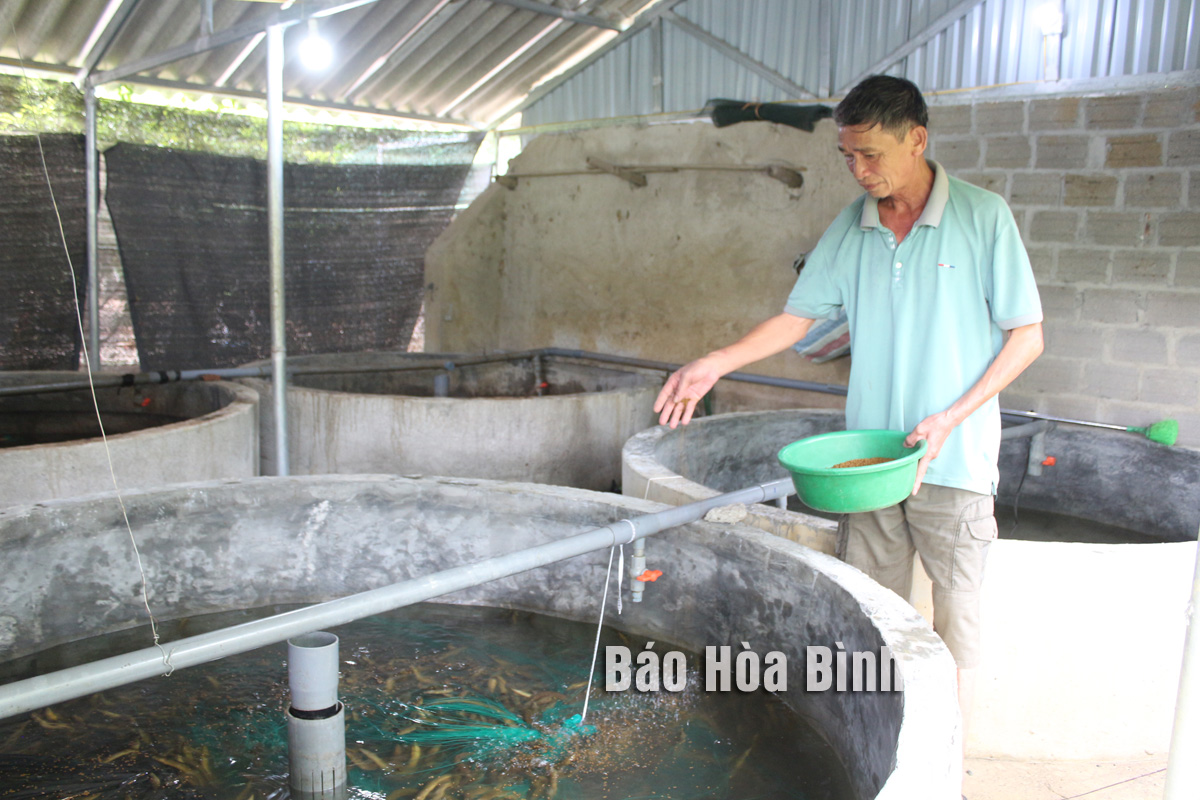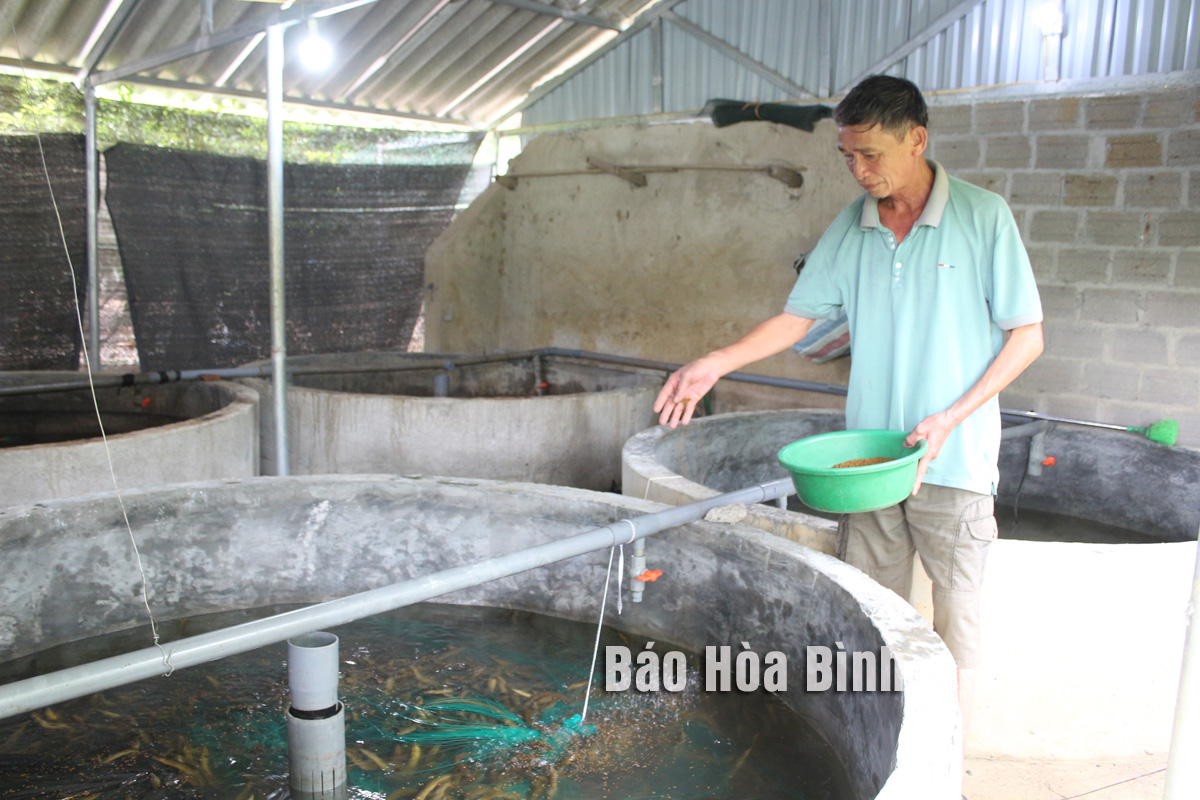
Hoa Binh province has 145 out of the 151 communes, wards, and towns which are ethnic minority-inhabited and mountainous areas, 506 communes facing extreme difficulties, and more than 74% of its population being ethnic minority people.
People in Doan Ket commune, Yen Thuy district invest in a commercial eel farming model along the value chain, thereby increasing their income.
With the locality’s socio-economic characteristics, the government’s three national target programmes on rural development, promoting potential and strengths of regions to produce goods in accordance with value chain, under the umbrella of the National Target Programme on promoting socio-economic development in ethnic minority areas has a significant meaning.
In Hoa Binh, the capital of the National Target Programme during 2021-2025 is allocated to the implementation of many important and practical contents to serve investment needs of ethnic minority areas, such as shortage, domestic water, planning, population settlement; investment in essential infrastructure for production and life; developing education and training, improving the quality of human resources; and building cultural life; medical development, and people's health care.
In particular, the province also prioritises resources integration to raise the implementation efficiency in an attempt to improve agricultural and forestry production development and life of local ethnic minority people.
According to the provincial Committee for Ethnic Minorities, the project has been implemented in the right direction, right subjects with appropriate contents and forms to utilise potential and advantages of each locality in the direction of crop and livestock restructuring, helping create jobs and increase income for people in ethnic minority areas.
By the end of 2023, the rate of poor households in the province, communes in ethnic minority areas and those facing extreme difficulties remained 9.2%, 9.8% and 21.27%, respectively.
Currently, six communes facing extreme difficulties have been recognised to have completed the goals of building new-styled countryside, bringing the total number of communes recognised as meeting the new rural standards and exiting the category of communes facing extreme difficulties in the period of 2021 - 2023 to 14.
These are positive results in efforts to stabilise livelihoods, improve incomes for people in ethnic minority areas, and effectively contribute to creating a facelift for agriculture, farmers and rural areas in the province.
The emulation movement "Hoa Binh joining hands to build new-style rural areas” has been widely spreading, becoming a driving force that motivates the localities to renew rural landscapes and improve the material and spiritual lives of the residents. In this movement, the people play a central role-both as the main implementers and direct beneficiaries of its outcomes.
In response to the global digital revolution, Hoa Binh Newspaper is transforming itself into a modern and multi-platform media hub, blending cutting-edge technology with a restructured newsroom and a new generation of tech-savvy journalists.
Hoa Binh province’s Association of the Elderly recently held a conference to review the project on expanding the inter-generation self-help club model until 2025.
In a move to implement Resolution No. 57-NQ/TW, issued on December 22, 2024 by the Politburo, which targets breakthroughs in science-technology development, innovation, and digital transformation, the Hoa Binh provincial Department of Health has issued a plan to roll out the "Digital Literacy for All” campaign within the local health sector.
An Nghia Commune (Lạc Sơn District) is one of the communes that achieved the tha standard of the national new rural area in 2018. Entering a new development phase, the commune is now trying to meet the criteria for the advanced new rural development. With the strong political will and the public consensus, the commune is gradually overcoming the challenges to reach this goal, aiming for the sustainable development.



